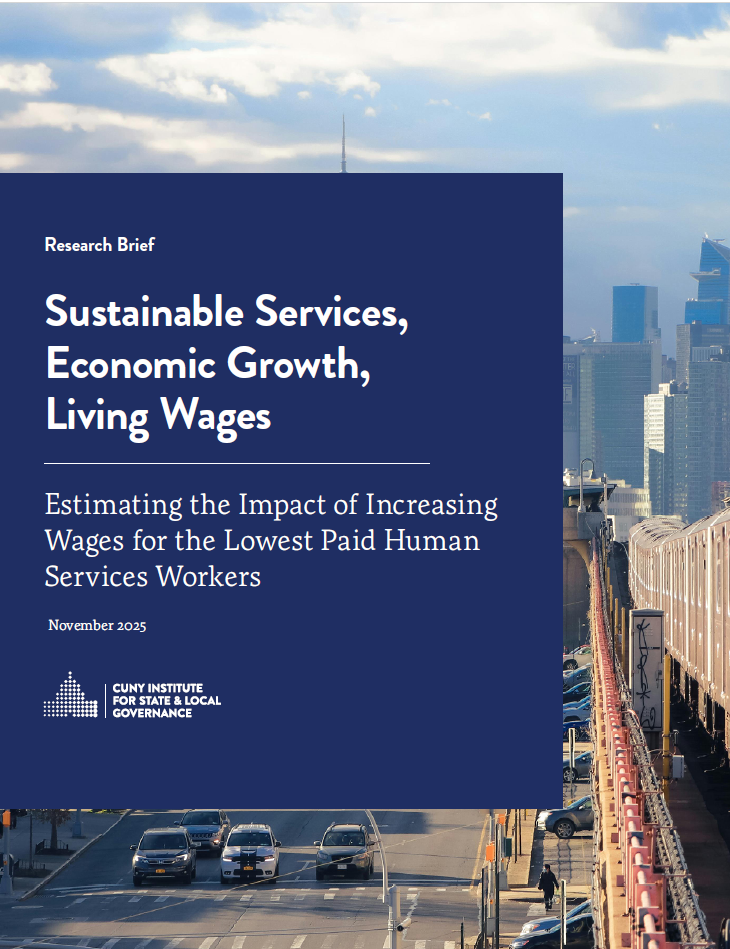Web Report: Critical Services, High Growth, Low Wages
New York’s human services sector is crucial to its social fabric. Every year, hundreds of thousands of people across the state rely on these public services, whether it be childcare, homelessness prevention, mental healthcare, or services for older adults. These services seek to provide all New Yorkers—no matter their income, zip code, or background—with the tools and support to lead healthy, safe, financially stable lives.
-
There is no one single or definitive definition of human services, but generally, services can include and are not limited to community mental health and substance abuse services; alternatives to incarceration and reentry services; food and nutrition assistance; family, child, and youth services; housing and shelter services; employment and workforce services; services for older adults; legal and victim assistance; and services for individuals with intellectual or developmental disabilities. Human services are provided in a number of settings, such as via social service agencies or community-based, residential, or institutional settings. This report focuses on the human services workforce, specifically those workers providing client-contact services. The most predominant of these occupations include home health aides, nursing assistants, and childcare workers.
With the growing affordability crisis and lingering socioeconomic impacts of the COVID-19 pandemic, need for these resources have grown exponentially in recent years; to fill this demand, services funded by state and local governments are increasingly contracted out to nonprofit organizations, amounting to as much as $9 billion a year in New York City alone. Despite the importance of these services, wages in the human services sector lag behind the cost of living in New York, straining the pipeline of people entering and staying in these careers, and forcing many workers to experience the same financial and wellbeing strains as the people they serve.
In 2024, a group of New York-based human service workers, executives, advocates, and former government leaders began Bring Up Minimum Pay (BUMP), an anti-poverty campaign that promotes wages that reflect the true cost of living for New York human services workers.
To provide data and analysis, BUMP approached CUNY ISLG to conduct an analysis to better comprehend the breadth of the State’s human services landscape, understand the prevailing average wages of nonprofit employees that provide client-contact human services contracted by the State, and explore whether human services workers experienced real wage gains over time.
Select findings include:
A second analysis then measured the gap between human services wages and the cost of living in New York.
This web report lays out what we found from both analyses. Download report findings in PDF form below.
Related Work
CUNY ISLG has conducted a return-on-investment (ROI) analysis to gain deeper insight on the impact of raising wages for the lowest paid human services workers.
Released in November 2025, Sustainable Services, Economic Growth, Living Wages brief adds to Critical Services by examining the impacts of a living wage on local economies, on the stability and well-being of individuals and their communities, and what it would mean for the sustainability and service provision of human services as a sector.
On May 19, nonprofit leaders from the BUMP campaign joined CUNY ISLG researchers for a presentation and discussion of our findings. Below is a recording of that webinar.


